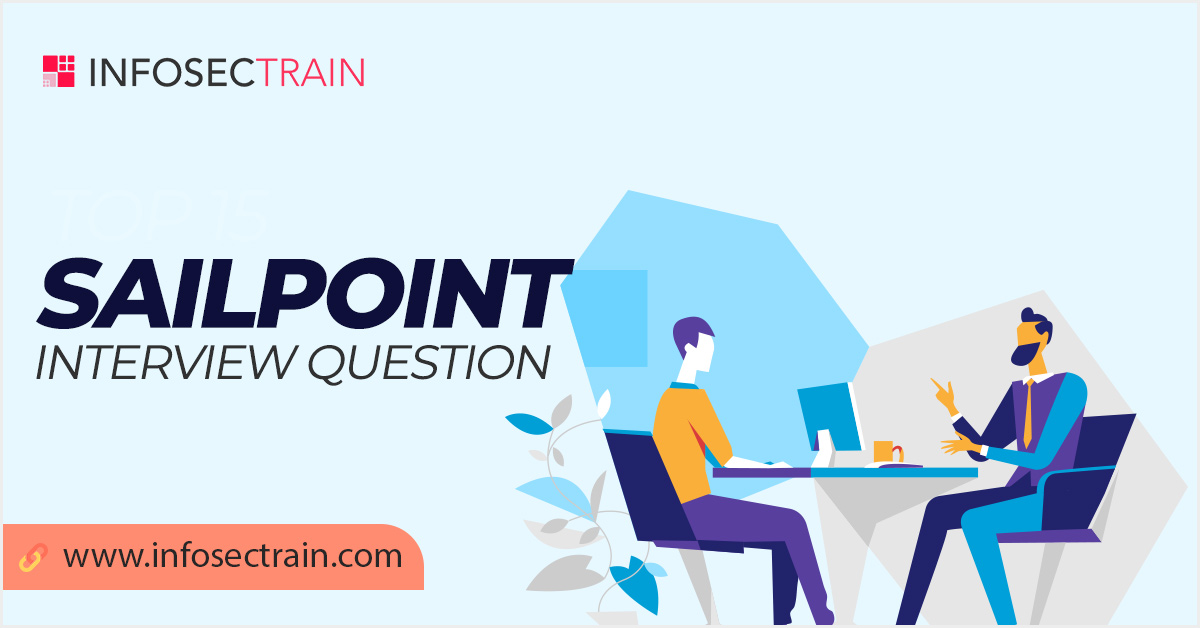Best SailPoint Interview Question
Question1: What is Identity cube in SailPoint?
Answer: The Identity cubes represent users in the SailPoint IdentityIQ. The Identity cubes contain all user information, such as Identity, Identity Details, and Entitlements.
Question2: How many types of Roles can we create in Sail point?
Answer: There are four types of roles that we can create in the Identity IQ. These roles are:
- Organizational role
- Business role
- IT role
- Entitlement role
Question3: What is Role-based Access Control?
Answer: Role-based access control (RBAC) provides access to applications, networks, or systems to the users according to their enterprise roles. RBAC ensures that employees get access only to that information required to perform their tasks and prevent them from accessing sensitive information.
Question4: What is rule Library?
Answer: A rule library contains a set of methods invoked by the steps of workflows and other rules. These methods stored in the rule library are related but not connected. By creating the Rule library, we can store all the rules in a single place and use them in different areas.
Question5: What are the key drivers in Identity and access management?
Answer: The key drivers in Identity and access management are:
- Improved security
- Audit and compliance
- Operational efficiency
- Business enablement
Question6: What is the importance of cloud identity management?
Answer: In the present time, many organizations are adopting cloud-based applications. Cloud identity management helps secure the cloud environment by providing organizations clear visibility on who is authorized to access and manage the cloud data. It enables a risk-free work environment.
Question7: What are the basic requirements to fulfill before implementing cloud identity management?
Answer: Before implementing cloud identity management, we need to look after the following things:
- Compliance
- Loss of the data and storage
- Data integrity
Question8: What are the advantages of implementing the SailPoint cloud identity management solution?
Answer: Advantages of the SailPoint cloud identity management solution:
- It provides Identity and access management without affecting the capabilities of the server.
- Managing the data on the cloud in SailPoint is effortless and cost-effective than any other platform.
- It’s back up, and data storage is protected, and enterprises can rely on it.
Question9: In how many ways can variables be initialized in workflows?
Answer: The variables can be initialized on workflows in the following ways:
- Reference
- String
- Rule
- Call method
- Script
Question10: Name the few cloud models in which the SailPoint identity IQ solution can be implemented directly?
Answer: The SailPoint IdentityIQ solution can be implemented directly on almost all the models of cloud, including the following:
- Private cloud
- Hybrid cloud
- Public cloud
- Community cloud
Question11: What is the pre-iterate rule in SailPoint IdentityIQ?
Answer: The pre-iterate rule gets executed for the whole file only once before processing the records in the file. The rule addresses the requirement of file management for the aggregation task. The examples include unzipping the file and validating the date of the file before aggregating the stale data.
Question12: What does APMFA stand for?
Answer: The APMFA is an abbreviation of Application-level multifactor authentication.
Question13: What is Elasticity and Scalability in cloud identity management?
Answer: Elasticity: Elasticity refers to the increasing and decreasing the number of resources to match the workload changes. Elasticity helps in reducing the cost of the overall infrastructure.
Scalability: Scalability refers to increasing the size of the workload by beefing up the existing resource capacity.
Scalability and elasticity both are quite essential when it comes to Identity and access management in the cloud.
Question14: What are the different layers in cloud architecture?
Answer: The different layers in the cloud architecture are:
- Walrus
- Node controller
- Cluster controller
- Storage controller
- Cloud controller
Question15: What do you understand by Identity intelligence?
Answer: Identity intelligence refers to transforming the scattered data into useful and easily comprehended business-relevant information stored at a centralized location.





 1800-843-7890 (IN)
1800-843-7890 (IN) sales@infosectrain.com
sales@infosectrain.com
 1800-843-7890 (India)
1800-843-7890 (India) 
